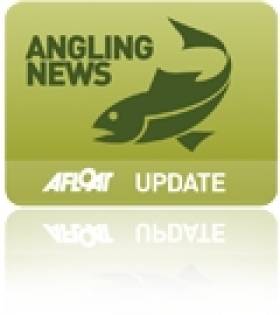Displaying items by tag: Avoca River
Arklow RNLI To Feature In RTÉ Series 'Abhainn'
#RNLI - Volunteers from Arklow RNLI in Co Wicklow are to feature in RTÉ's Irish language programme Abhainn.
The TV series features the rivers of Ireland, and this episode (to be broadcast in September) looks at the Avoca River from its source high up in Wicklow Mountains to the river mouth at Arklow.
An RTÉ film crew spent the afternoon and evening of Thursday 5 June filming at what is the oldest of the RNLI's lifeboat stations in Ireland.
During the day the film crew had the opportunity to experience firsthand and get a glimpse of the level of training required by the highly skilled and efficient RNLI volunteers in their lifesaving work, which can often be difficult and sometimes dangerous.
New station operations manager John Tyrrell said: "Filming with RTÉ was a great opportunity to showcase the commitment of volunteers not only in Arklow but in the many other coastal and inland water communities across Ireland."
He added that the RNLI wouldn’t exist without fundraising. The charity is totally reliant on the generosity of the public and indebted to the work of fundraisers at station branches as well as those raising money inland.
"It is because of the willingness and selfless nature of our volunteers, who will readily swap leisure, comfort and sleep for cold, wet and fatigue, that the charity can provide an on-call, 24-hour lifeboat search and rescue service here," said Tyrrell.
Search For Missing Person As Body Recovered From Avoca River
#Drowning - The body of a man has been recovered from the Avoca River in Arklow, Co Wicklow while the search continues for a second missing person, according to The Irish Times.
It's being reported that one other person was rescued from the river near the Bridgewater Shopping Centre after the alarm was raised in the early hours of this morning (10 September).
Two others thought to have entered the water were able to get out themselves.
The Irish Times has more on the story HERE.
Body Recovered From Avoca River Confirmed As Missing Teen
#NEWS UPDATE - RTÉ News reports that a body found in the Avoca River in Co Wicklow yesterday is that of James Sheehan.
The 18-year-old from Arklow went missing in the early hours of Sunday 19 August after a night out.
Gardaí and search teams recovered his body from the river near the south quay in Avoca yesterday evening. A post-mortem will be carried out at Loughlinstown Hospital later today.
Avoca Produces Record Sea Trout
Denis O'Toole has spoken of his amazement at catching a record 16-pound sea trout from the Acova River in Co Wicklow.
The angling hobbyist and professional fly dresser told the Bray People how he had spent the day fishing with a friend in what has been described as 'the most polluted river in Europe' when he spotted the monster, and decided to take up the challenge.
"I went down to the pool where I had previously seen the fish move," he said. "I put on a 1 1/2 inch aluminium tube with a salar single hook (with the barb squeezed down) and started at the head of the pool.
"On my fourth cast while stripping the fly back he hit it with a bang and all hell broke loose; all I could see was white foam on the water through the inky darkness. I thought I had hooked Free Willy."
O'Toole continued: "He was lying in only three feet of water when he took and in total the fight lasted 20 minutes. My fishing partner, Dean Kennedy, netted the fish. He was then carefully weighed and measured and released back to spawn to produce more 16 lb'ers."
The Bray People has more on the story HERE.


























